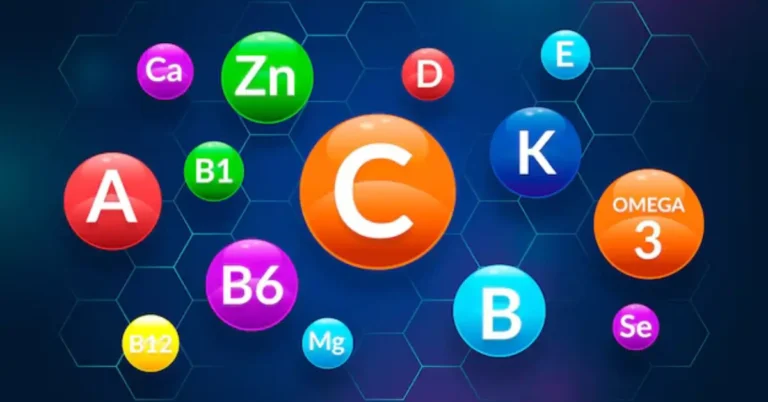Vitamins are organic compounds that are crucial to various physiological functions in the human body. They are essential nutrients that must be obtained through the diet because the body either does not produce them at all or does not produce them in sufficient quantities. Vitamins are vital for numerous biological processes, including metabolism, immunity, and cellular repair. This article will provide a comprehensive exploration of vitamins, from A to Z, covering their sources, functions, recommended daily allowances, and the health consequences of deficiencies and excesses.
Vitamin A: The Visionary Nutrient
Functions: Vitamin A is essential for maintaining healthy vision, immune function, and skin health. It plays a crucial role in the formation of the visual pigments in the retina, which are necessary for both low-light and color vision. Additionally, vitamin A is involved in the maintenance of epithelial tissues, which form the skin and mucous membranes.
Sources: Vitamin A can be found in two primary forms: preformed vitamin A (retinol and its derivatives) and provitamin A carotenoids. Retinol is found in animal products such as liver, fish oils, milk, and eggs. Carotenoids, such as beta-carotene, are found in plant-based foods like carrots, sweet potatoes, spinach, and kale.
Deficiency: A deficiency in vitamin A can lead to a range of health issues, including night blindness, an increased risk of infections, and in severe cases, complete blindness. It is also associated with a condition known as xerophthalmia, where the eyes fail to produce tears.
Excess: While vitamin A is essential, excessive intake can lead to toxicity. Hypervitaminosis A can cause symptoms such as nausea, headaches, dizziness, and even liver damage. It is particularly dangerous for pregnant women as it can cause congenital disabilities.
Vitamin B Complex: The Energy Powerhouse
The B vitamins are a group of eight water-soluble vitamins that play a crucial role in cell metabolism. Each vitamin within the B-complex group has a unique role, but they generally work together to support energy production and the creation of red blood cells.
Vitamin B1 (Thiamine): Thiamine is essential for converting carbohydrates into energy and is also involved in nerve function. Deficiency can lead to beriberi, a condition that affects the cardiovascular and nervous systems.
Vitamin B2 (Riboflavin): Riboflavin is crucial for energy production and the metabolism of fats, drugs, and steroids. Deficiency can cause ariboflavinosis, leading to sore throat, redness and swelling of the lining of the mouth and throat, and skin disorders.
Vitamin B3 (Niacin): Niacin aids in DNA repair and the production of steroid hormones. It also helps lower cholesterol levels. Pellagra, characterized by diarrhea, dermatitis, and dementia, can result from a deficiency.
Vitamin B5 (Pantothenic Acid): This vitamin is vital for the synthesis of coenzyme A, which is essential in fatty acid metabolism. While deficiency is rare, it can lead to symptoms like fatigue, irritability, and hypoglycemia.
Vitamin B6 (Pyridoxine): Pyridoxine is involved in amino acid metabolism, red blood cell production, and the creation of neurotransmitters. Deficiency can lead to anemia, depression, confusion, and a weakened immune system.
Vitamin B7 (Biotin): Biotin is important for the health of hair, skin, and nails. It also plays a role in metabolic processes. Biotin deficiency, though rare, can cause hair thinning, skin rash, and brittle nails.
Vitamin B9 (Folate): Folate is crucial for DNA synthesis and repair, making it especially important during pregnancy for fetal development. Deficiency can lead to neural tube defects in newborns and megaloblastic anemia in adults.
Vitamin B12 (Cobalamin): Cobalamin is essential for neurological function and red blood cell formation. A deficiency can lead to pernicious anemia and neurological issues like numbness and tingling in the hands and feet.
Sources: B vitamins are widely available in various foods. Meat, dairy products, eggs, nuts, seeds, legumes, and leafy greens are all rich sources of these vitamins. Fortified cereals and grains also provide significant amounts of B vitamins.
Deficiency and Excess: Deficiencies in B vitamins can lead to a range of health issues, including fatigue, anemia, depression, and nerve damage. However, excessive intake, particularly through supplements, can also cause problems such as nerve damage (in the case of B6) or skin flushing and liver damage (in the case of B3).
Vitamin C: The Immune Booster
Functions: Vitamin C, also known as ascorbic acid, is a powerful antioxidant that plays a key role in immune function, skin health, and the synthesis of collagen, a protein that helps wounds heal. It also enhances the absorption of iron from plant-based foods.
Sources: Vitamin C is abundant in fruits and vegetables, particularly citrus fruits like oranges, lemons, and grapefruits. Other good sources include strawberries, bell peppers, broccoli, and spinach.
Deficiency: Scurvy is the classic disease caused by vitamin C deficiency. It is characterized by fatigue, gum disease, joint pain, and anemia. Scurvy was historically common among sailors who went long periods without fresh fruits or vegetables.
Excess: While vitamin C is water-soluble and excess amounts are usually excreted, extremely high doses can cause gastrointestinal discomfort, including diarrhea and nausea.
Vitamin D: The Sunshine Vitamin
Functions: Vitamin D is unique because it can be synthesized by the body when the skin is exposed to sunlight. It is crucial for calcium absorption and bone health. It also plays roles in immune function and inflammation reduction.
Sources: Natural sources of vitamin D are limited and include fatty fish like salmon and mackerel, liver, egg yolks, and fortified foods like milk and cereal. Sun exposure remains a primary source for many people.
Deficiency: Vitamin D deficiency can lead to rickets in children, a condition characterized by bone deformities, and osteomalacia in adults, leading to bone pain and muscle weakness. It is also associated with an increased risk of osteoporosis and fractures.
Excess: Excessive vitamin D intake, usually through supplements, can lead to hypercalcemia, a condition where too much calcium accumulates in the blood, causing nausea, vomiting, weakness, and kidney damage.
Vitamin E: The Antioxidant Protector
Functions: Vitamin E is a potent antioxidant that helps protect cells from oxidative damage. It also supports immune function and skin health. Vitamin E is particularly important for maintaining the health of the skin and eyes and strengthening the body’s natural defense against illness and infection.
Sources: Vitamin E is found in a variety of foods, including nuts, seeds, vegetable oils (such as sunflower, safflower, and olive oil), green leafy vegetables, and fortified cereals.
Deficiency: Vitamin E deficiency is rare but can occur in individuals with fat malabsorption disorders. Symptoms include nerve and muscle damage, vision problems, and a weakened immune response.
Excess: High doses of vitamin E supplements can interfere with blood clotting and increase the risk of hemorrhage.
Vitamin K: The Clotting Factor
Functions: Vitamin K is essential for blood clotting and bone health. It helps in the synthesis of proteins required for blood coagulation and also plays a role in maintaining bone density.
Sources: There are two main forms of vitamin K: K1 (phylloquinone), found in green leafy vegetables like kale, spinach, and broccoli, and K2 (menaquinone), found in fermented foods and animal products.
Deficiency: Vitamin K deficiency can lead to bleeding disorders due to the inability of the blood to clot properly. It can also contribute to osteoporosis and coronary artery disease.
Excess: There is no known toxicity associated with high intake of vitamin K from food, but excessive amounts of vitamin K supplements can interfere with anticoagulant medications.
Vitamin F: Essential Fatty Acids
While not traditionally classified as a vitamin, vitamin F refers to essential fatty acids, primarily omega-3 and omega-6 fatty acids. These are crucial for brain function, inflammation control, and cellular structure.
Functions: Omega-3 fatty acids, found in fish oil, flaxseeds, and walnuts, are known for their anti-inflammatory properties and benefits to heart health. Omega-6 fatty acids, found in vegetable oils, nuts, and seeds, are essential for skin health and energy production.
Sources: Fish, particularly fatty fish like salmon, mackerel, and sardines, are excellent sources of omega-3s. Omega-6 fatty acids are abundant in vegetable oils, nuts, and seeds.
Deficiency: A lack of essential fatty acids can lead to dry, flaky skin, poor wound healing, and an increased risk of chronic diseases like heart disease.
Excess: While both omega-3 and omega-6 fatty acids are essential, an imbalance, particularly too much omega-6 and too little omega-3, can contribute to inflammation and chronic diseases.
Other Vitamins and Nutrients
While the traditional list of vitamins ends with vitamin K, the category of essential nutrients extends beyond these vitamins. Here are a few more nutrients that, while not classified as vitamins, are equally crucial for health:
Choline: Often grouped with the B vitamins, choline is vital for brain health, liver function, and muscle movement. It is found in eggs, liver, and peanuts.
Flavonoids: These are a group of plant compounds with antioxidant properties, found in fruits, vegetables, tea, and red wine. They help protect against chronic diseases such as heart disease and cancer.
Coenzyme Q10: This compound is involved in energy production and is found in meat, fish, and whole grains. It has been studied for its potential role in heart health and neurodegenerative diseases.
Lutein and Zeaxanthin: These carotenoids are important for eye health and may reduce the risk of cataracts and age-related macular degeneration. They are found in green leafy vegetables like kale and spinach.
Inositol: A type of sugar that plays a role in cell membrane health and nerve function. It is found in fruits, beans, grains, and nuts.
Conclusion
Vitamins, from A to Z, play an indispensable role in maintaining health and preventing disease. Each vitamin has unique functions and works synergistically with others to support overall well-being. While a balanced diet typically provides all the necessary vitamins, certain life stages, health conditions, or dietary restrictions may require supplementation. However, it is important to approach supplementation with caution, as excessive intake of some vitamins can lead to toxicity and adverse health effects.
Understanding the role of each vitamin and its sources can empower individuals to make informed dietary choices that support long-term health. Whether through diet or supplements, ensuring an adequate intake of these essential nutrients is key to maintaining vitality and preventing chronic diseases.

